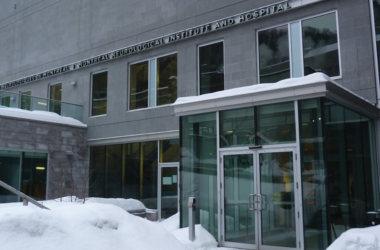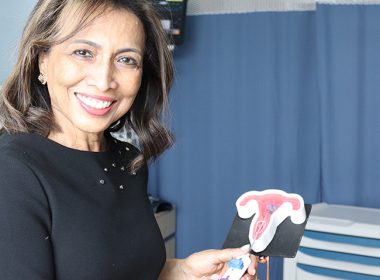Neurodegenerative diseases such as Alzheimer’s, Parkinson’s, and ataxia are caused—as their categorization would suggest—by the degradation of nervous system cells. One to three individuals per 100,000 are affected by late-onset cerebellar ataxias (LOCA), a disease characterized by impaired muscle control that worsens over time. While most types of ataxia set[Read More…]
Ask a Scientist
Should AI chatbots display emotions?
If you’ve visited an online retail store, you’ve likely encountered a chatbot before. It’s the small message that pops up in your screen’s bottom corner, saying something along the lines of, “Hi there! Thanks for visiting our site. Can we help you look for something?” Elizabeth Han, a Desautels Information[Read More…]
Peering into the universe with gravitational lensing
Radio waves coming from galaxies millions or billions of light-years away—an immense distance compared to only eight light-minutes between the Earth and the Sun—gradually fade as they lose energy. Many become essentially invisible even to today’s powerful telescopes by the time they reach our little, blue planet. So it’s not[Read More…]
Photogrammetry: A new approach to detailed, accessible flower imaging
There are hundreds of thousands of flower species in the world, each with their own shapes, colour patterns, and natural habitats. Scientists aim to accurately preserve and document every single species, but the complexity and delicateness of these natural decorations make this a challenging endeavour. Researchers from McGill and the[Read More…]
On a mission to remission: How researchers are trying to combat type 2 diabetes
What we call insulin today was first manufactured in 1921 by Charles Best and Frederick Banting. The hormone, originally called pancreatic extract, gives those with diabetes a chance at a healthy life, especially the six million people in Canada who live with some form of the disease. There are three[Read More…]
The nature of Earth seems as alien as Mars
In 1957, the boundaries between Earth and space were first breached: The USSR launched the satellite Sputnik into space, marking the first contact between humans and our galaxy, setting off the aptly named space race between the Soviet Union and the U.S. Even after icy international relations began to thaw[Read More…]
Could invasive species biologists bring their expertise to NASA?
In February of 2021, NASA’s Perseverance rover landed on Mars. Perseverance was the fifth rover that the space agency sent to the planet, but it had a unique purpose. The rover conducted the first mission to Mars designed to collect samples to be brought back to Earth, where they would[Read More…]
Get excited about endophytes
In the world of industrial production, there is often one resource that goes forgotten—microbes. Microbes are everywhere and have adapted to almost every environment, from the inside of nuclear reactors to the outside of the International Space Station. When thinking of natural interactions with microbes, we often think of disease,[Read More…]
Exploring the beneficial applications of virtual reality
Facebook recently announced that it would be rebranding itself as Meta. It will become the parent company of its social media platforms—Facebook, WhatsApp and Instagram—and will roll out new ways of experiencing these platforms. Facebook also explained that it would be focussing on developing virtual reality (VR) and augmented reality[Read More…]
Dr. Lucy Gilbert honoured among Top 25 Women of Influence
Women’s achievements and contributions to medical science have long been overlooked. To combat this prejudice and recognize their accomplishments across all disciplines, the annual Top 25 Women of Influence awards highlight Canadian women who have inspired positive change in their field of work. This year, Dr. Lucy Gilbert, a professor[Read More…]













